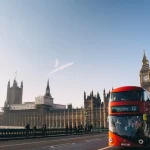
Discovering the Vibrant Culture and History of Berlin, Germany

Introduction to Berlin, Germany: A City Steeped in Culture and History
Berlin, the capital city of Germany, is a destination that is rich in culture and history. With a history that dates back over 800 years, Berlin has witnessed significant events and has been at the center of major historical movements. From the rise and fall of the Berlin Wall to its vibrant art scene and diverse music and nightlife, Berlin offers a unique experience for travelers interested in exploring its cultural heritage.
Berlin’s cultural significance can be traced back to its role as the capital of Prussia and later the German Empire. Throughout its history, Berlin has been a hub for artists, intellectuals, and political thinkers. It has been home to renowned musicians, writers, philosophers, and scientists who have shaped the cultural landscape of not only Germany but also the world.
Today, Berlin continues to attract visitors from all over the globe who are drawn to its rich history and vibrant cultural scene. The city is known for its numerous museums, art galleries, theaters, and music venues. It is a city that seamlessly blends its historical past with modern innovation, making it an exciting destination for culture enthusiasts.
Exploring Berlin’s Rich Cultural Heritage: From Museums to Monuments
Berlin is home to some of the world’s most renowned museums and monuments. The city boasts over 170 museums, covering a wide range of topics from art and history to science and technology. The Museum Island, located in the heart of Berlin, is a UNESCO World Heritage site and houses five world-class museums: the Pergamon Museum, the Bode Museum, the Neues Museum, the Alte Nationalgalerie, and the Altes Museum.
The Pergamon Museum is one of the most popular museums in Berlin and is known for its impressive collection of ancient artifacts. Highlights include the Pergamon Altar, the Ishtar Gate of Babylon, and the Market Gate of Miletus. The Bode Museum, on the other hand, is renowned for its collection of sculptures and Byzantine art. The Neues Museum is home to the iconic bust of Nefertiti, while the Alte Nationalgalerie showcases 19th-century art. Lastly, the Altes Museum houses a collection of classical antiquities.
When visiting these museums, it is advisable to plan ahead and purchase tickets in advance to avoid long queues. It is also recommended to allocate enough time to fully explore each museum and take advantage of any guided tours or audio guides that may be available.
In addition to museums, Berlin is also home to several iconic monuments that are steeped in history. The Brandenburg Gate, a symbol of German unity and freedom, is one of the most recognizable landmarks in Berlin. The Reichstag Building, which houses the German Parliament, is another must-visit monument. Visitors can take a guided tour of the building and even visit the dome for panoramic views of the city.
The Rise and Fall of the Berlin Wall: A Symbol of Germany’s Turbulent History
The Berlin Wall is perhaps one of the most significant historical landmarks in Berlin. Built in 1961, the wall divided the city into East and West Berlin and stood as a physical representation of the Cold War divide between East and West. The wall was not only a barrier physically separating families and friends but also a symbol of oppression and political repression.
The impact of the Berlin Wall on Berlin and Germany as a whole cannot be overstated. It led to the loss of lives as people attempted to escape from East Berlin to West Berlin. Families were torn apart, and many people lost their homes and livelihoods. The wall also had a profound psychological impact on both sides, with East Berliners living under constant surveillance and restricted freedoms.
Since the fall of the Berlin Wall in 1989, Berlin has made significant efforts to commemorate and preserve the memory of this turbulent period in its history. The East Side Gallery, a section of the wall that has been turned into an open-air gallery, features murals painted by artists from around the world. The Berlin Wall Memorial, located near Bernauer Strasse, provides a comprehensive overview of the history of the wall and its impact on the city.
Visitors to Berlin can also visit Checkpoint Charlie, one of the most famous border crossings between East and West Berlin during the Cold War. Today, it serves as a reminder of the division that once existed and the struggles faced by those living under the shadow of the wall.
Berlin’s Art Scene: A Hub for Creativity and Expression
Berlin’s art scene is known for its creativity, diversity, and avant-garde spirit. The city is home to numerous art galleries, exhibition spaces, and street art that showcase a wide range of artistic styles and movements.
One of the most prominent art galleries in Berlin is the Hamburger Bahnhof – Museum für Gegenwart. Located in a former train station, the museum houses a vast collection of contemporary art from the 20th and 21st centuries. It features works by renowned artists such as Andy Warhol, Joseph Beuys, and Gerhard Richter.
Another must-visit art space in Berlin is the KW Institute for Contemporary Art. Located in a former margarine factory, KW showcases cutting-edge contemporary art through its exhibitions, performances, and events. It is known for its experimental approach to art and its commitment to supporting emerging artists.
In addition to traditional art galleries, Berlin is also famous for its vibrant street art scene. The city is home to numerous street art murals and graffiti that can be found throughout its neighborhoods. The East Side Gallery, mentioned earlier, is a prime example of how street art has been used to transform a historical landmark into a vibrant and dynamic art space.
The Music and Nightlife of Berlin: A Vibrant and Eclectic Scene
Berlin’s music and nightlife scene is renowned for its diversity and eclecticism. The city offers a wide range of music genres, from classical and opera to electronic and underground techno.
One of the most iconic music venues in Berlin is the Berlin Philharmonic, home to one of the world’s best orchestras. The Philharmonie, with its distinctive tent-like roof, is not only an architectural marvel but also a venue that hosts world-class performances by renowned conductors and musicians.
For those interested in electronic music, Berlin is a paradise. The city is known for its underground techno clubs, where DJs from around the world come to perform. Berghain, located in a former power plant, is one of the most famous techno clubs in Berlin. It is known for its strict door policy and marathon parties that can last well into the next day.
Berlin’s nightlife scene is not limited to techno clubs. The city offers a wide range of bars, pubs, and live music venues that cater to different tastes and preferences. From jazz clubs to indie rock venues, there is something for everyone in Berlin’s vibrant nightlife scene.
Berlin’s Food Culture: From Traditional German Fare to International Cuisine
Berlin’s food culture reflects its diverse population and rich history. The city offers a wide range of culinary experiences, from traditional German dishes to international cuisine.
When it comes to traditional German fare, Berlin has plenty to offer. Currywurst, a popular street food dish consisting of sausage topped with curry ketchup, is a must-try when visiting the city. Another traditional dish is schnitzel, a breaded and fried meat cutlet usually made from pork or veal. It is often served with potatoes or sauerkraut.
In recent years, Berlin has also become a hub for international cuisine. The city is known for its diverse food scene, with restaurants serving dishes from all over the world. From Vietnamese pho to Turkish kebabs, visitors can embark on a culinary journey without leaving the city.
Berlin’s food culture is not limited to restaurants and cafes. The city is also home to numerous food markets and street food stalls where visitors can sample a wide range of dishes. The Markthalle Neun, located in the Kreuzberg neighborhood, is one of the most popular food markets in Berlin. It offers a variety of fresh produce, artisanal products, and street food from different cuisines.
Discovering Berlin’s Green Spaces: Parks, Gardens, and Urban Oases
Despite being a bustling metropolis, Berlin is also known for its abundant green spaces. The city is home to numerous parks, gardens, and urban oases that provide a respite from the urban hustle and bustle.
One of the most famous parks in Berlin is Tiergarten, located in the heart of the city. With its sprawling green lawns, picturesque lakes, and tree-lined paths, Tiergarten offers a peaceful retreat for both locals and visitors. It is an ideal place for picnics, leisurely walks, or simply enjoying nature.
Another notable green space in Berlin is the Gardens of the World (Gärten der Welt) in Marzahn-Hellersdorf. This expansive park showcases different styles of gardens from around the world, including Japanese, Chinese, Korean, and Balinese gardens. Visitors can explore these beautifully landscaped gardens and immerse themselves in different cultural traditions.
In addition to parks and gardens, Berlin also has several urban oases that offer a unique blend of nature and urban design. The Holzmarkt area along the Spree River is one such example. It features a combination of green spaces, art installations, and sustainable architecture that create a vibrant and dynamic urban environment.
The Architecture of Berlin: A Blend of Old and New
Berlin’s architecture is a testament to its rich history and cultural identity. The city boasts a blend of old and new buildings that reflect different architectural styles and periods.
One of the most iconic historical buildings in Berlin is the Berlin Cathedral (Berliner Dom). Located on Museum Island, the cathedral is a stunning example of neo-Renaissance architecture. Its grand dome and intricate facade make it a must-visit landmark in the city.
Another notable historical building is Charlottenburg Palace, located in the Charlottenburg district. Built in the Baroque style, the palace is surrounded by beautiful gardens and houses a museum that showcases the history of the Prussian royal family.
In contrast to these historical buildings, Berlin is also known for its modern architecture. The Potsdamer Platz area, once divided by the Berlin Wall, has been transformed into a modern urban center with skyscrapers, shopping malls, and entertainment venues. The Sony Center, with its futuristic design, is one of the most prominent examples of modern architecture in Berlin.
Berlin’s Jewish Heritage: A Story of Tragedy and Resilience
Berlin has a rich Jewish heritage that dates back centuries. Before World War II, Berlin was home to one of the largest Jewish communities in Europe. However, the Holocaust and the atrocities committed by the Nazis resulted in the decimation of this community.
Today, Berlin has made significant efforts to preserve and commemorate its Jewish heritage. The Jewish Museum Berlin is one such example. The museum provides a comprehensive overview of Jewish history and culture in Germany, with exhibits that cover different periods and aspects of Jewish life.
Another important site is the Memorial to the Murdered Jews of Europe, located near the Brandenburg Gate. This memorial consists of 2,711 concrete slabs arranged in a grid pattern, creating a somber and reflective atmosphere. It serves as a reminder of the millions of lives lost during the Holocaust.
Berlin is also home to several synagogues that have been restored and preserved. The New Synagogue, located in the Mitte district, is one of the most significant synagogues in Berlin. It is a beautiful example of Moorish Revival architecture and serves as a place of worship and cultural events.
Conclusion: Why Berlin is a Must-Visit Destination for Culture and History Enthusiasts
In conclusion, Berlin is a city that offers a unique and vibrant experience for travelers interested in culture and history. From its rich historical heritage to its thriving art scene, diverse music and nightlife, and culinary delights, Berlin has something to offer for everyone.
The city’s museums and monuments provide a glimpse into its past, while its art galleries and street art showcase its creative spirit. Berlin’s music venues and clubs offer a diverse range of genres, from classical to underground techno. Its food culture reflects its diverse population, with traditional German dishes and international cuisine.
Berlin’s green spaces provide a respite from the urban hustle and bustle, while its architecture tells the story of its past and present. The city’s Jewish heritage serves as a reminder of the tragedies of the past and the resilience of its people.
Overall, Berlin is a must-visit destination for culture and history enthusiasts. It offers a unique blend of old and new, tradition and innovation, making it an exciting and dynamic city to explore. So pack your bags, book your tickets, and get ready to immerse yourself in the rich culture and history of Berlin.
If you’re planning a trip to Berlin, Germany, you might also be interested in exploring the wonders of Sweden. From its stunning landscapes to its rich history and vibrant cities, Sweden offers a unique travel experience. Whether you’re interested in exploring the beautiful archipelagos, visiting the charming towns of Stockholm and Gothenburg, or immersing yourself in the country’s fascinating Viking heritage, Sweden has something for everyone. Check out this article for more information on what Sweden has to offer.
Recent Posts


Chasing the Northern Lights: Top Aurora Borealis Viewing Spots to Experience the Magic
